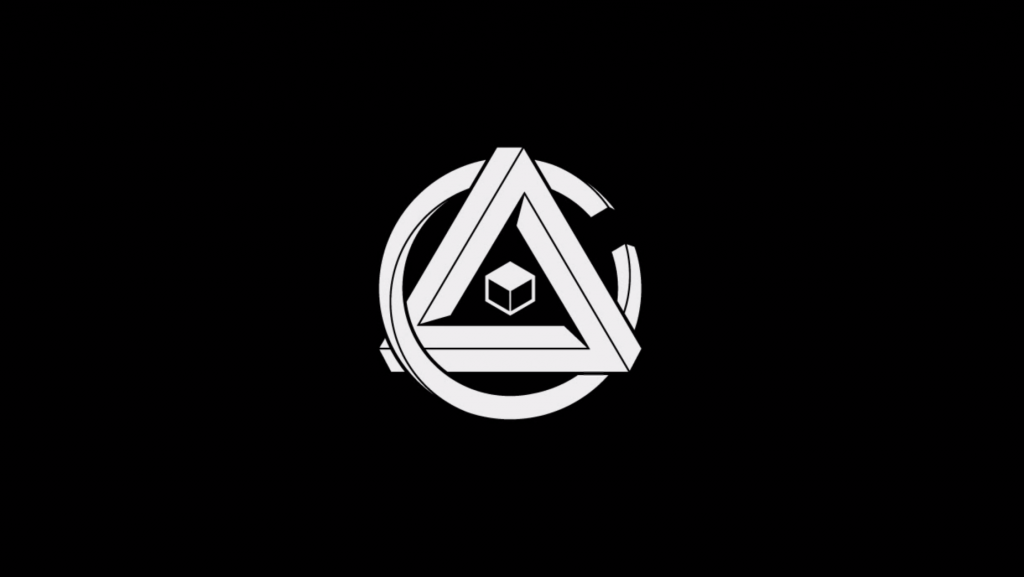
Non-Euclidean geometry is something I’m surprised we don’t see in more game. I have no idea what it actually means, but from what I’ve been able to piece together, worlds that use non-Euclidean laws of geometry can make some pretty weird shit happen. Which is why it so strange to me that no one has tried this before, especially with today’s game making tech. I don’t know if people have been too scared to try it because they might lose money or they just couldn’t design in that kind of environment or what, but I’m glad Alexander Bruce tried it, because he made a pretty awesome game out of it.
Normally I would go over the story here but there is none. You start in a room and you solve puzzles until you reach the credits. There is no dialog, no characters, no logo saying you’re in some testing facility. Just a dot in the center of the screen and the world in front of you. Well, not so much world as hallway. The entire game takes place in some kind of facility designed by M.C. Escher, where you spend most of your time walking down hallways or falling into pits that weren’t there before you looked down.
That is by far the biggest strength of this game: the environment. While a lot of it does look kind of bland, what with a lot of it being white hallways, it does a lot of really awesome shit with those hallways, usually when color gets involved. At points in every white hallway you run into an area where the wall fades from white to another color and it is there that thing start getting strange. You’ll see staircases disappear as you go through them in one direction but be completely solid when you walk up them in a different direction. You’ll walk down a hallway and end up in a never-ending circle, just walking around and around forever. You’ll find giant chasms that you can’t jump across but you can walk across with a walkway that forms under your feet as you step into the chasm. The physical rules of this world change from place to place, and figuring those rules out is how to progress.
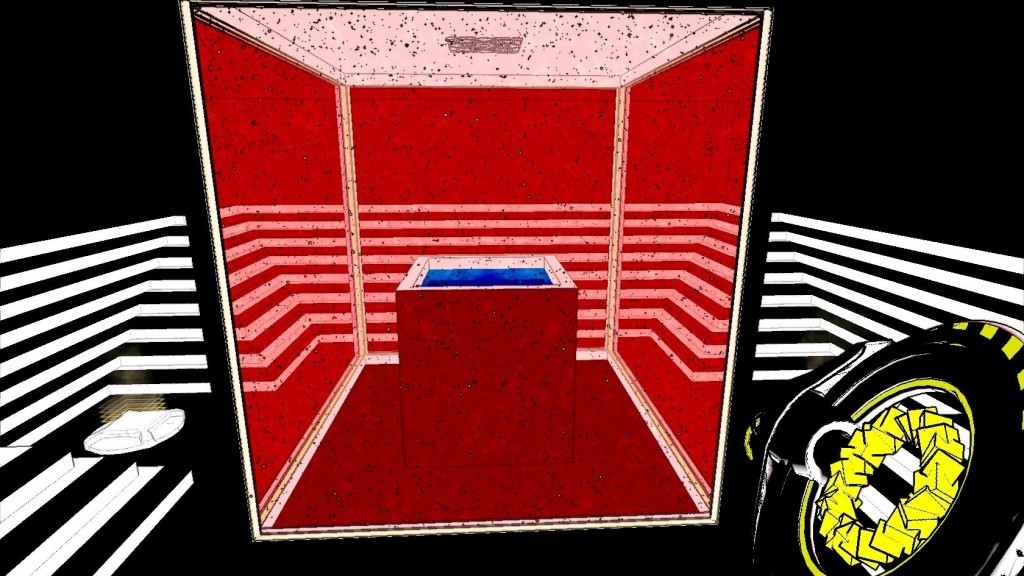
But even though no two places are exactly alike, you can definitely see similarities in certain areas, and no area is impossible to figure out. By walking around the area and just trying things, you can figure out how the area works pretty quickly. It encourages you to try new things and experiment, rarely telling you anything outright. And if you fuck up on an area, don’t worry about it. You can restart any area at any time by hitting the escape key, which will take you back to your main chamber and letting you fast travel to any area you’ve visited. It’s a really nice feature that makes it feel like even if you do screw up royally you can just start from the top and try again without having a giant FAILURE sticker stuck to your face.
While all of the early puzzles are all about navigating the environment and learning the way of the land, partway through you pick up a gun and the puzzles change. I don’t mean an actual gun, a brick gun. In earlier areas you could see hallways leading to single color walls or see big colored squares. Those are actually made up of bricks that, once you get the gun, can be picked up and placed to solve puzzles. These puzzles are more about opening doors or getting yourself into a position where you can go back to navigating. As you progress you find upgrades for your gun which let you go back through areas and progress through other colored walls and puzzles.
Thinking back on it, the gun does seem a tiny bit out of place when compared to the rest of the game. Every time you pick up a new gun, the next area has a mouse painted on the wall telling you which buttons to hold. They don’t tell you what those buttons do, but it is still telling you exactly what to do. Nothing else you needed to know about the game was told to you like that, not even the controls (Sure, they were posted on one of the walls in the main chamber but it’s not the same as having the instructions appear outside of there). Everything other piece of info we needed about how the world works was given through doodles on the wall. You would see one, click on it, and the image would be replaced with text. The text would read like something out of a really shitty philosophy, but it was all telling you how the world works. It didn’t just come out and say it. You had to read what it said and think about it for a second. Not too long, though. What made these things work was that the info they provided was clear but was never too direct.
My biggest problem with the game would have to be its lack of any real sense of progression. As you go through the game, completing areas and finding more doodles, you don’t get much sense that you’re getting closer to your goal. Yes, the map does get filled out and the doodles take up another wall of you main chamber that fills up as you collect more, but since you can’t see an end goal or know if the doodles are there for the whole game it just makes things bigger. The game even trolls you (kind of) with progress. On the options wall you see a timer counting down from when you start the game. I figured something would happen when that clock hit zero, so I waited. And what did it count down to? I’m not going to tell you, but I will say it was very underwhelming. When I was playing through this game I had no idea how far I was into it or how close to the end I was until the game told me.
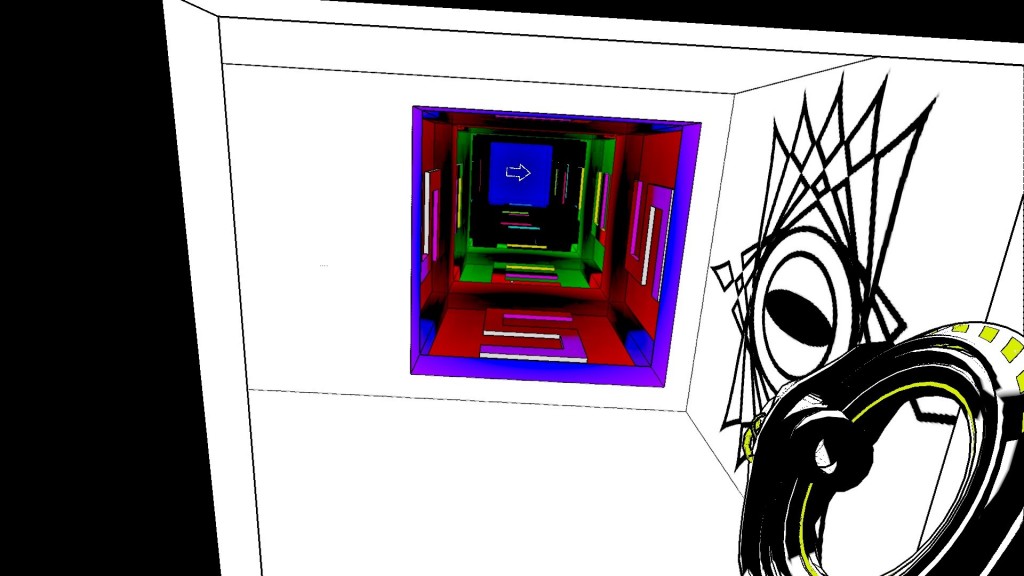
The absent feeling of progression can also be attributed to the lack of direction. Some of the areas are connected in very strange ways. You can be in a room that’s on one side of the map, then fall down a pit or walk through a door and end up on the exact opposite side of the world. The map also doesn’t connect areas in 3D space, so any rooms that are on top of one another add another layer of fun to reading the map. I had no idea where I was supposed to go half the time, leading to me running through the same areas 17 times trying to find some way to the next puzzle or ending up in that goddamn endless circle hallway again. If you stare at certain walls for a little while they can materialize an arrow that tells you which way to go, but that is still not great. A game should have flow. Unless you’re in a maze or something you should be able to move from area to area without that much difficulty. I know it’s a puzzle game, but how can I solve the puzzles if I can’t find them? Wait a minute… Was that one of the puzzles?
The final thing I want to talk about before wrapping up is the music in this game. I don’t usually talk about the music or sound design in a game unless it is the focus of a game, but here I thought it was definitely necessary. The soundtrack for the game is all ambient sounds. I remember waves slowly washing of a beach, a cool breeze blowing through the air. It was all very relaxing, and that definitely worked to the game’s advantage. Whenever I got to a puzzle that I had trouble with or couldn’t figure out where I was supposed to go or got into that fucking endless circle, the music helped keep me calm. In any other game like this I would’ve been hurling a torrent of curse words at my monitor and biting something, but listening to those sounds mellowed me out and helped me keep my focus. I was a bit weirded out by it at first, but the sounds eventually got to me and helped me enjoy the game.
Antichamber is the perfect game to show somebody who thinks games have no originality left in them. The way Alexander Bruce was able to make this world work was awesome, coming up with some really clever puzzles and level designs that, at first glance, look incomprehensible, but are completely understandable once you get your hands on it. The minimal use of color makes the world look very unique and the use of ambient sounds help create a very peaceful atmosphere while trying to solve puzzles. While there is very little feeling of moving forward, a very prevalent feeling of being lost, and the kind of out of place and gamey gun tutorials, Antichamber is still a good puzzle game that will eat up a few hours in a very calm and really cool white hallway.
FINAL SCORE: 4/5
Thanks to Alexander Bruce for sending us a code for this game. Antichamber is currently available on Steam for $19.99.

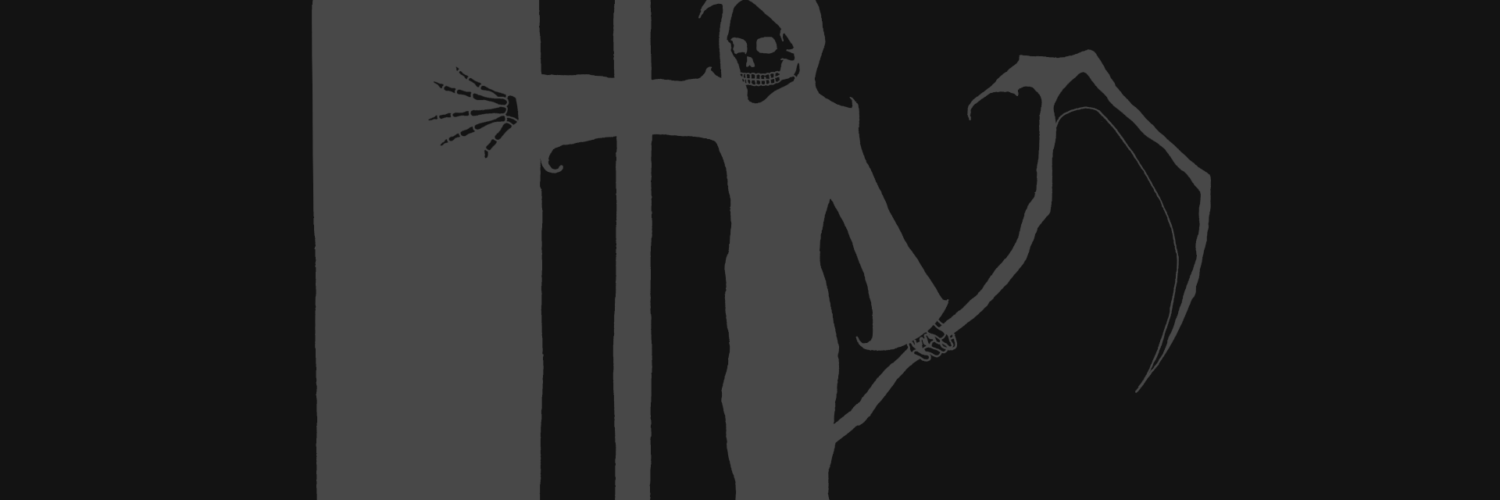
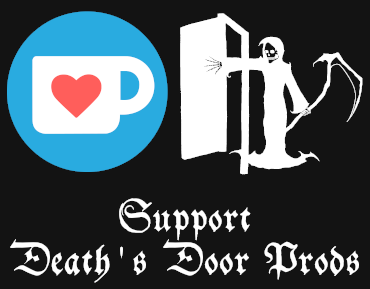

Add comment